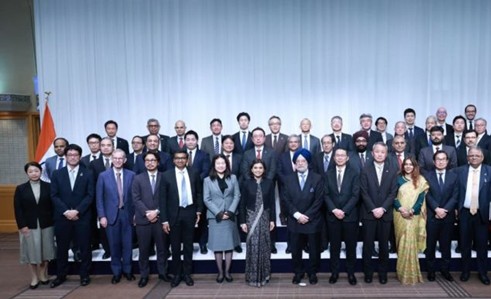India and Japan are strengthening energy cooperation through new investments, technology collaboration, and policy-driven growth in the Indo-Pacific region.
New Delhi
Union Minister for Petroleum and Natural Gas, Hardeep Singh Puri, held a high-level roundtable with Japan’s leading industry representatives in Tokyo on Monday, focusing on expanding Indo-Japanese collaboration across the entire energy value chain. The discussion emphasized the shared goal of securing energy stability and supporting sustainable growth in the Indo-Pacific, a region critical to the global economy.
Puri highlighted that India’s expanding energy infrastructure, driven by Prime Minister Narendra Modi’s leadership, presents unprecedented opportunities for international partnerships. India is currently opening investment avenues worth more than $500 billion across key segments such as exploration and production (E&P), liquefied natural gas (LNG), city gas distribution, hydrogen, new fuels, and shipping. This vast scale of development is backed by a young workforce, structural reforms, and a business environment that encourages global participation.
He noted that Japan’s cutting-edge technology and leadership in green innovation perfectly align with India’s growth-focused approach and the vision to Make in India for the World. The minister also underscored India’s liberalized policies, including 100 per cent foreign direct investment (FDI), transparent bidding processes, and year-round exploration licensing, which together create a predictable and investor-friendly business environment.
India’s six major oil and gas public sector undertakings (PSUs) recorded combined revenues of approximately $315 billion in FY 2024-25, accounting for around 8 per cent of the nation’s GDP. Puri described this scale as evidence of India’s role as a global energy anchor and a reliable partner for Japanese investors and technology providers.
Earlier this month, Puri reiterated that India is charting its own energy path from the sands of Rajasthan to the sea depths of the KG Basin. With 1 million sq km of offshore area now open for exploration and 99 per cent of ‘No-Go’ areas cleared, India is accelerating its search for new energy reserves and technological advancement through international collaboration.



